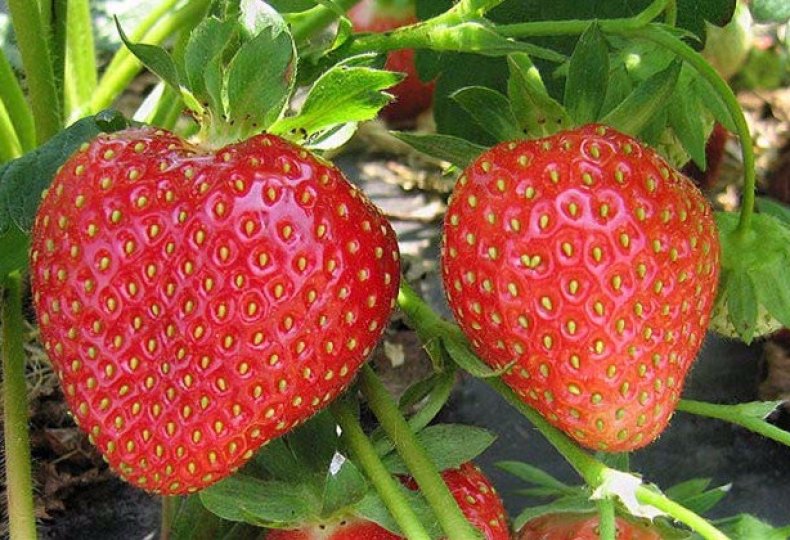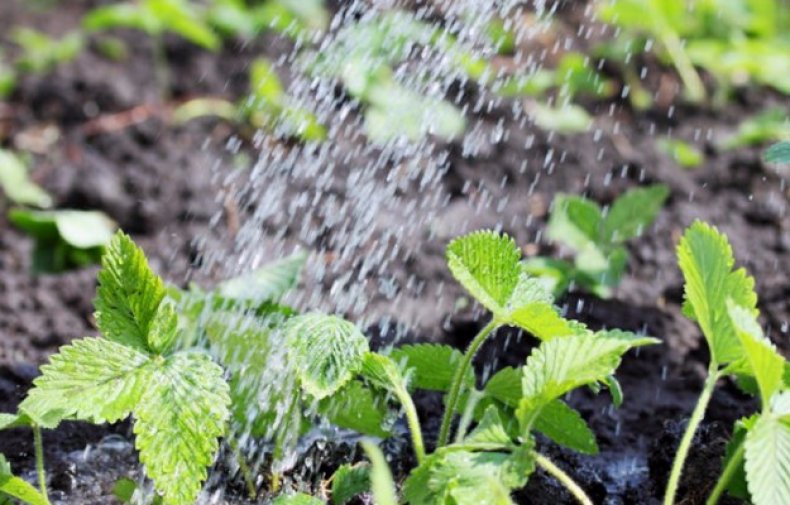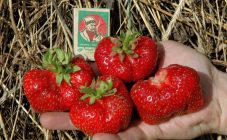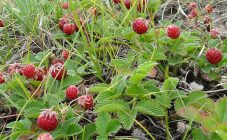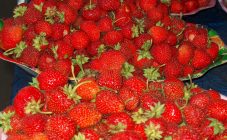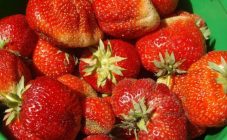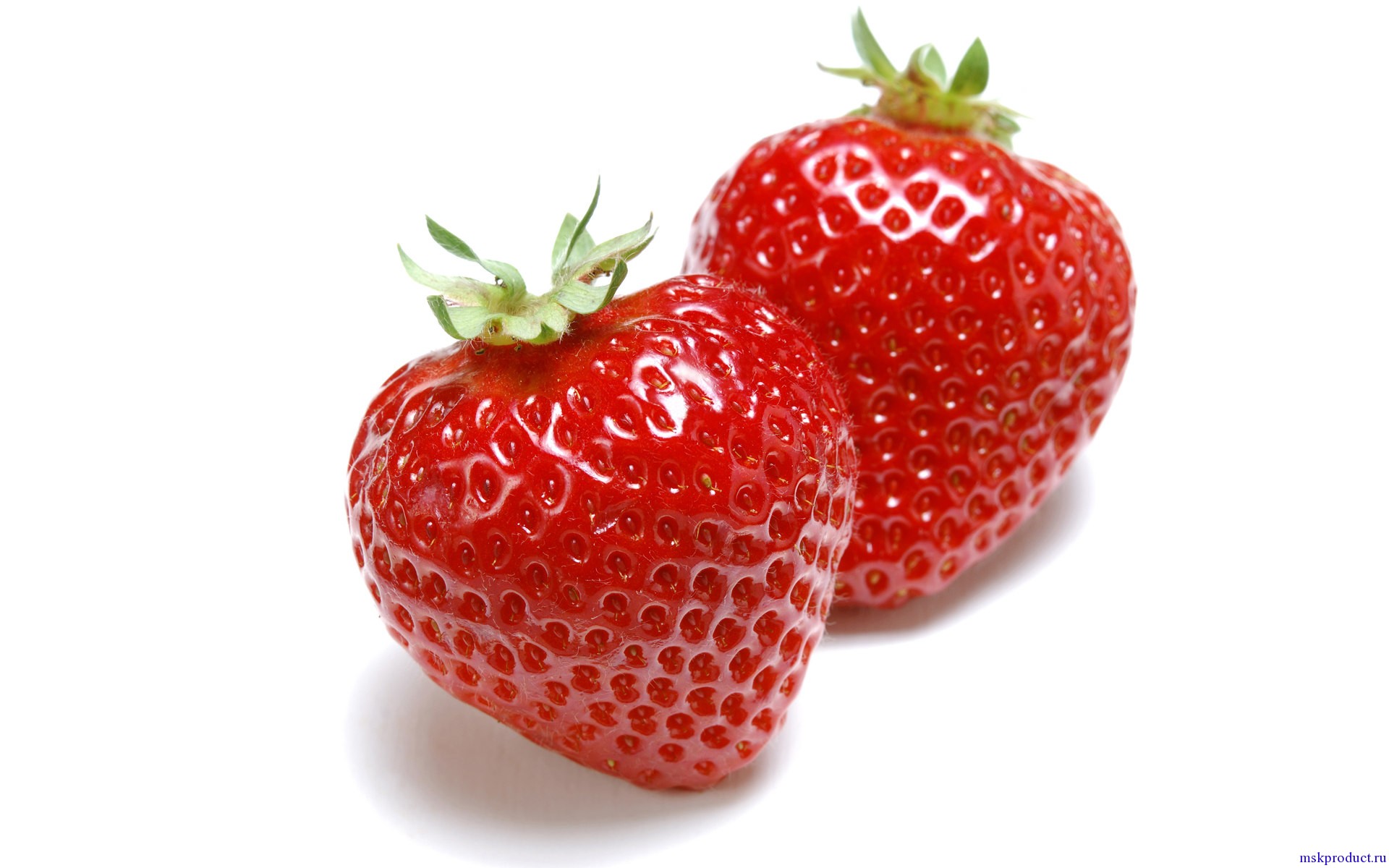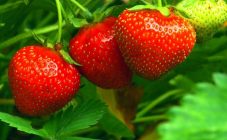Content:
With the arrival of spring, the human body especially needs a portion of fresh fruits and vegetables from the garden. Strawberries ripen one of the first, although it all depends on the variety. The Wim Kimberly strawberry is an incredibly tasty early-ripening variety that is making it rapidly spread, especially among farmers looking to sell it.
Kimberly strawberry: description and characteristics
The young strawberry variety was bred relatively recently by crossing the Chandler and Gorella varieties. Strawberries have incorporated the best parenting qualities. The variety has its own individual feature - a high concentration of natural sugars in the composition, which compensate for acidity.
- Bushes of this type are quite spreading and powerful, strong growth is noted, leafiness is average. Throughout the growing season, whiskers of small sizes are actively formed, which have a red color.
- The leaf plates are medium in size, ribbed and bubbly, painted in light green tones. Peduncles are formed at the same level with the leaves, long, there is a slight pubescence.
- Inflorescences are multi-flowered, rather spreading.
- The berries are characterized by a regular conical shape with a characteristic shiny bloom, without a neck, as it ripens, the fruit turns red-orange. Taste qualities are worthy without the slightest exaggeration. Dessert pulp, fine-grained, juicy and exudes a pleasant aroma. On a tasting scale, taste was rated at the highest possible score.
Fruit weight, as a rule, varies from 18 to 22 g. The total fruiting abundance can reach 150 kg / ha. According to the breeders, the variety has good indicators of frost resistance and drought resistance, has a high resistance to diseases and pest attacks.
Agricultural rules
Planting and caring for strawberries is similar to other strawberry varieties. Like all early maturing varieties, Kimberly strawberries are resistant to spring frosts. However, you should not assume that the plant is completely unpretentious. Under unfavorable climatic and weather conditions, the bushes will survive, but this will have a detrimental effect on the quality and quantity of fruits.
Purchase of planting material
The growth and development of the bushes, their lifespan and the abundance of fruiting will depend on the quality of the seedlings. You should not buy seedlings from strangers, as well as in places unsuitable for this. The best option is to get acquainted with the farmers who grow this crop.
In any case, when buying, you must carefully examine the seedlings. The leaves should have a deep green color and be solid. The presence of dots indicates the defeat of fungal diseases. This can lead not only to the death of seedlings, but also to the defeat of other cultivated plants in the country.
Landing
Strawberries can be planted in spring (in regions with unfavorable climatic conditions) and in autumn (in southern regions). The optimal time for planting in spring is mid-April - first half of May, and in autumn - in late August - early September.The plant still has the opportunity to take root before the onset of cold weather, the heat will not prevent it.
The Kimberley variety is picky about the amount of incoming sunlight. In addition, the landing site must be protected from drafts and strong gusts of wind.
The soil must pass moisture and air well, be enriched with mineral and organic fertilizers. It is recommended that the soil contains a peat mixture and sand. When preparing the beds, it is imperative to remove all weeds and plant debris, including the root system. It will not hurt to treat the soil with disinfectants before planting strawberry seedlings.
It is necessary to plant the bushes observing an interval of at least 30 cm. This is due to the fact that the plant is actively forming a mustache and after several years a dense bed will form.
Before planting, a small amount of ash, humus or compost must be added to each planting hole. The bushes are carefully placed in the hole, the root system is straightened. As it falls asleep with soil, it is necessary to tamp it so that air cavities do not form between the roots.
The bushes must be watered abundantly immediately after planting. If strawberries are planted in autumn, then additionally it is necessary to remove all old leaves so that the immature plant does not use resources for green mass.
Care
Strawberries don't require much attention. Mandatory care components are watering, weeding, loosening the soil and applying fertilizers.
After planting, the plant must be watered daily for 10 days, as moisture is absorbed, carefully loosen the soil.
Adult plants need to be watered less often, but still often, at the same time it is advised to weed the beds, since it is easier to pull the weeds out of the moist soil.
Strawberries need to be fed 4 times during one growing season:
- shortly after the onset of spring;
- before flowering;
- during the formation of fruits;
- at the end of summer, so that the plants gain strength before the upcoming winter.
Strawberries need both organic and mineral fertilizers. For its cultivation, it is best to use urea, compost, wood ash, humus, superphosphate and urea, as well as complex fertilizers containing potassium, phosphorus and nitrogen.
Some farmers use a different fertilization calendar and apply the formulations 3 times after fruiting, and 4 times in October.
Advantages and disadvantages
Kimberly strawberries have many advantages that more than overcome the existing disadvantages. Thanks to them, the variety is so widespread and in demand. Main advantages:
- Excellent taste, caramel taste prevails.
- The attractive appearance of the berries, which makes it possible to realize the harvested harvest, is in demand on the market.
- High rates of cold resistance, which allows the plant to be grown in regions with unfavorable climatic conditions.
- Strong peduncles.
- Early fruiting period.
- High productivity.
- Thanks to their pulp structure and dense shell, strawberries can be transported even over long distances.
- Resistant to a wide range of diseases and insect pests.
The disadvantages of culture are as follows:
- The fruiting period is only 2-3 weeks. The duration will depend on weather conditions and compliance with agricultural rules.
- The plant does not tolerate drought well, in such conditions it can quickly die.
The character of the Kimberley strawberry variety is sometimes grumpy, but in general, even a beginner and inexperienced agronomist can grow it. Before purchasing planting material, it is recommended that you familiarize yourself with the features of planting and caring for the plant.
